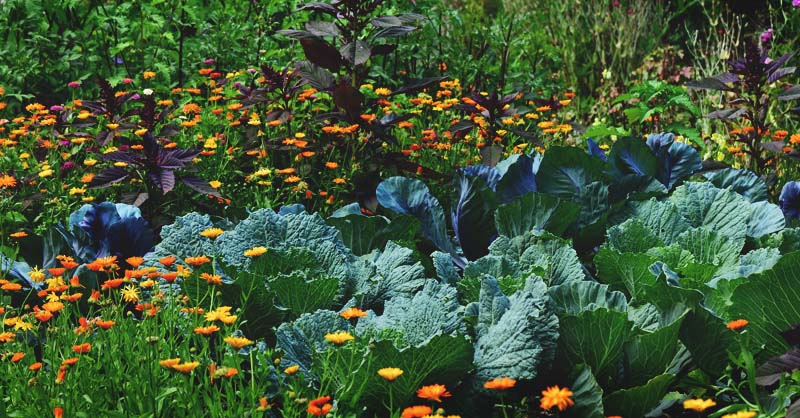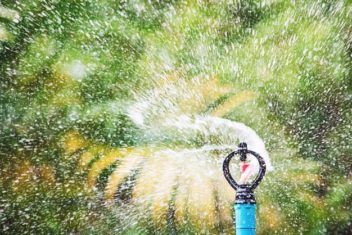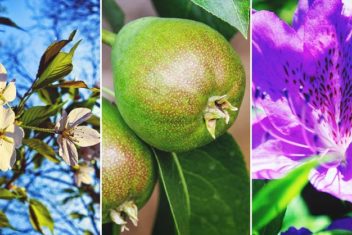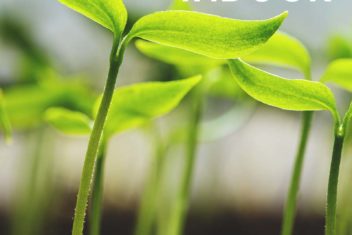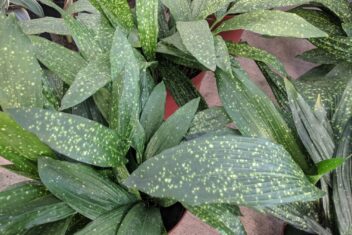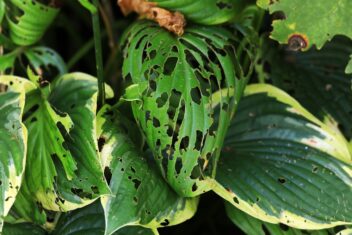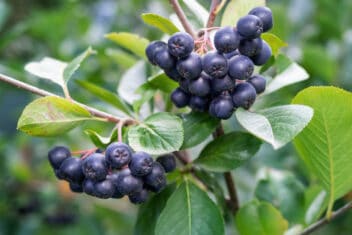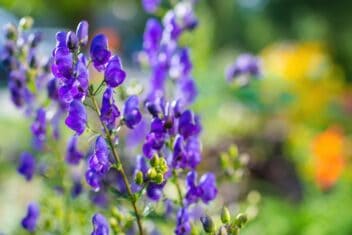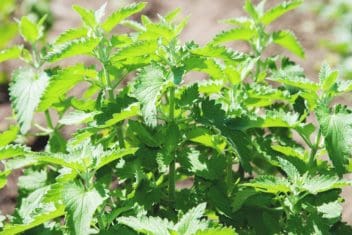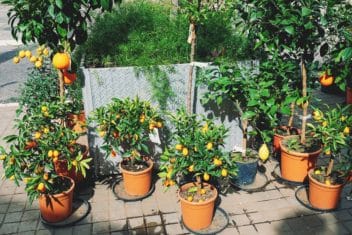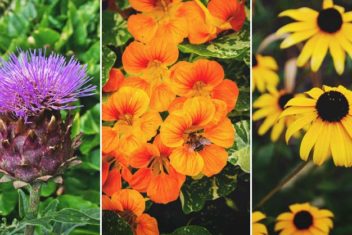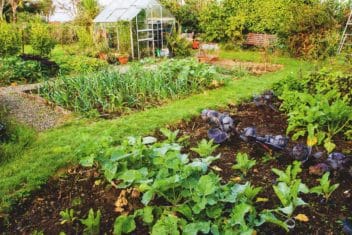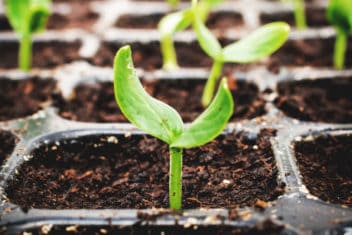One of the first things most new homesteaders do is start an annual vegetable garden. As a homesteader who happens to grow almost all of my food, I can tell you this is a great way to become more self-sufficient in a hurry.
Annual vegetable gardens take a lot of work, though. Every year you have to plan your plantings, start your seeds, amend your soil, manage pests and pathogens, save your seeds, water, water, and water some more. (I think you get the picture).
Edibles like fruit and nut trees, herbs, and perennial vegetables take more work to get started. However, unlike an annual vegetable garden that will require daily tending, perennial edible landscapes only need occasional maintenance once established.
For long-term value, planting a perennial edible landscape plot is well worth the trouble.
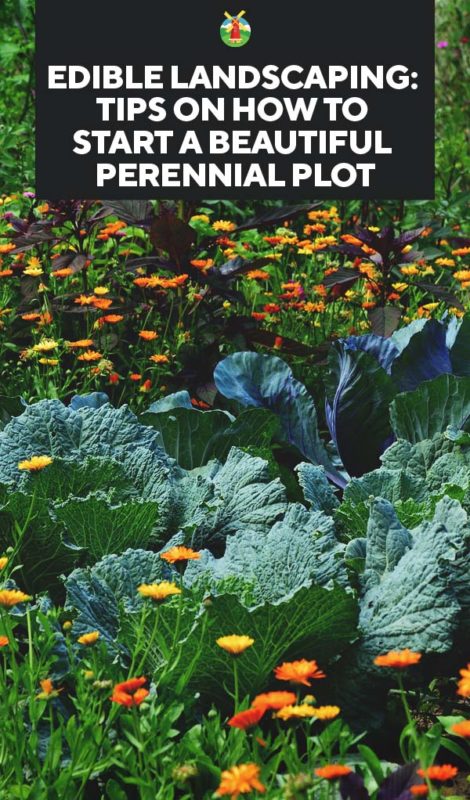
4 Reasons to Invest in Perennial Edible Landscaping
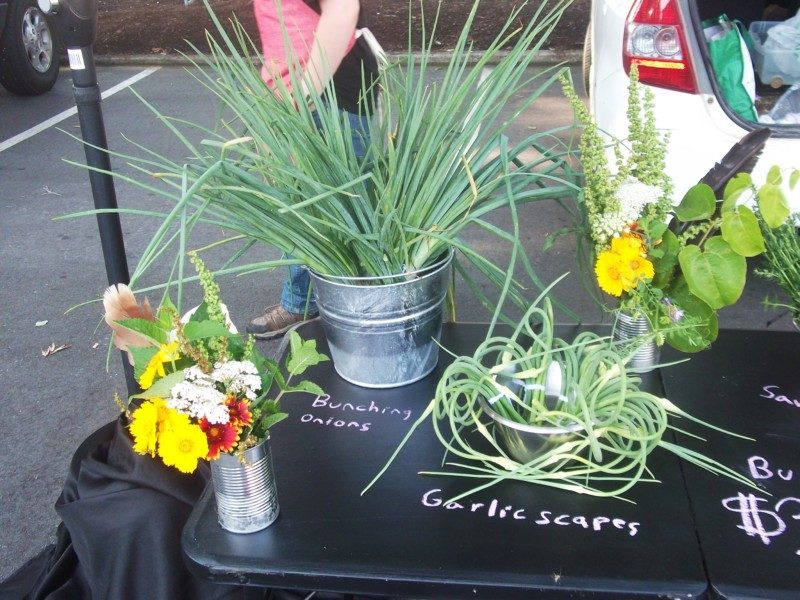
Reason 1: Reap the Rewards for Years to Come
Fruit tree varieties grown on dwarfing rootstock can begin bearing fruit 1-3 years after planting and can keep on producing for 15 years. Standard-sized fruit trees usually take about 5-7 years to produce but can be productive for 30 years or longer.
Perennial vegetables like rhubarb, asparagus, Egyptian walking onions, horseradish, artichokes, assorted plants that produce cut greens, and herbs take 1-3 years to become well-established. However, they can then produce and self-propagate indefinitely with minimal care.
There are even some plants that we often use as annuals that can be perennialized. For example, I grow Hardneck Garlic as a perennial purely for the garlic scapes that are awesome on the grill. Each year the underground bulb grows larger, and the above ground parts look like giant chives with Dr. Suess-like flower spikes in June.
Reason 2: Increase Your Homegrown Food Supply
Most annual vegetables have a pretty specific growing requirement for good production. Gardening conditions and pest pressure can vary significantly from year to year. Hedging your food production bets by adding perennial edible plots to your homestead can increase your odds of getting good yields every year.
Reason 3: Supplement Your Livestock Feed
Once your perennial edible plot is established, you can allow livestock to do some of your maintenance work for you and supplement their feed.
My chickens and ducks free range in my plots periodically. They do light tilling to aerate the soil. They munch on top growth from some of my more productive plants. They drop manure to help maintain the virility in those areas.
I don’t usually let my goats browse directly in my edible landscape areas. They tend to be too destructive. However, I take them all my green trimmings and let them eat the bark off branches we then use in our cold-smoker (e.g., apple wood for bacon).
Reason 4: Add Beauty
I have to confess, having a beautiful homestead is important to me. I see my homestead as a canvas that I paint with diverse foods and other resources we use in our daily lives.
Planting edible landscape plots as substitutes for traditional landscaping makes your homestead beautiful and gives you more food to supplement what comes out of your vegetable garden.
Growing a long-flowering golden delicious apple tree instead of a nearly fruitless flowering apple adds beauty and gives you edible fruit. Strawberries have lovely foliage and stunning blooms as an edible ground cover.
Those are just a few of the reasons to plant yourself an edible perennial landscape plot. Now, let’s cover how you can get started.
How to Start an Edible Perennial Landscape in 4 Steps
Step 1: Spend Some Time on Plant Selection
Plant selection is the most important and most challenging part of starting an edible plot. The keys to success are to choose plants that grow well in your area, and that will also grow well together.
Select by Soil pH:
As an example, in my area, apples and blueberries grow well. However because they have very different soil pH requirements, apples need a pH of about 6.5 and blueberries do better at around 4.5. Therefore, these two plants should not be grown together in an edible landscape plot.
Luckily, there’s a plant called a Honeyberry that looks and produces fruit very similar in taste to a blueberry. Honeyberries like soil with a pH of 5.5-7.5 so they can be planted in the same plot as an apple tree.
If you want to grow blueberries, they will grow well with many edible evergreen trees like yaupon (for tea leaves), monkey puzzle (for seeds), and Korean Pine (for pine nuts). You can also plant blueberries with certain crabapple trees that produce edible kiwi-sized fruits in soil with a pH of 5.0.
Opt for Disease-Resistant Varieties
There are a lot of plant diseases to contend with these days. Fruits like apples are susceptible to fire blight and cedar apple rust. Both of these spread by the wind and can strike at any time. You could spend five years waiting for fruit and then lose your tree to these diseases.
Before you select your plants, find out which diseases are common in your area and choose plant varieties that have built-in resistance. You can get this information from your agricultural extension office or reputable nurseries in your area.
In response to growing pressure for disease resistant plants, many nurseries offer “improved” trees and plants selected for their natural ability to repel or survive diseases. The “liberty apple” is an excellent example of an improved fruit tree, with disease resistance, which has been around since the 1970’s.
Choose Plants for your Climate and Weather
I love oranges. Unfortunately, I live in USDA zone 7A. There is only one cold-hardy orange I can grow here called the trifoliate orange, and it’s not very tasty. So, even though I wish I could grow delicious oranges in my yard, it’s just not possible where I live.
In fact, even though I technically live in zone 7A, our winter winds and high winter humidity make it much harder for plants rated only to zone 7 to survive. Because I know this, I choose plants that are hardy down to at least zone 6 as a precaution.
USDA cold hardy zones are useful guidelines. However, every yard has microclimates and weather extremes that you should also take into consideration when choosing plants you expect to grow for decades.
The American Horticultural Society has also developed a heat zone map to use for plant selection. Some plants that can tolerate the cold can’t handle the heat.
I planted the Siberian Pea shrub in some of my edible landscapes to have perennial peas. They are fine in winter. However, they drop their leaves in warm weather. I have been able to grow even one pea in four years as a result!
Choose plants that align with your climate regarding both heat and cold as well as other conditions such as humidity, dryness, amounts of rain, etc. For best results, talk to people who are already successfully growing fruit trees and other perennial edibles in your area to get recommendations.
Special Considerations
Many edible plants require cross-pollination or male and female plants to produce fruit. Make sure to include plants for appropriate cross-pollination or choose self-fertile varieties.
Step 2: Apply Edible Landscape Design Techniques
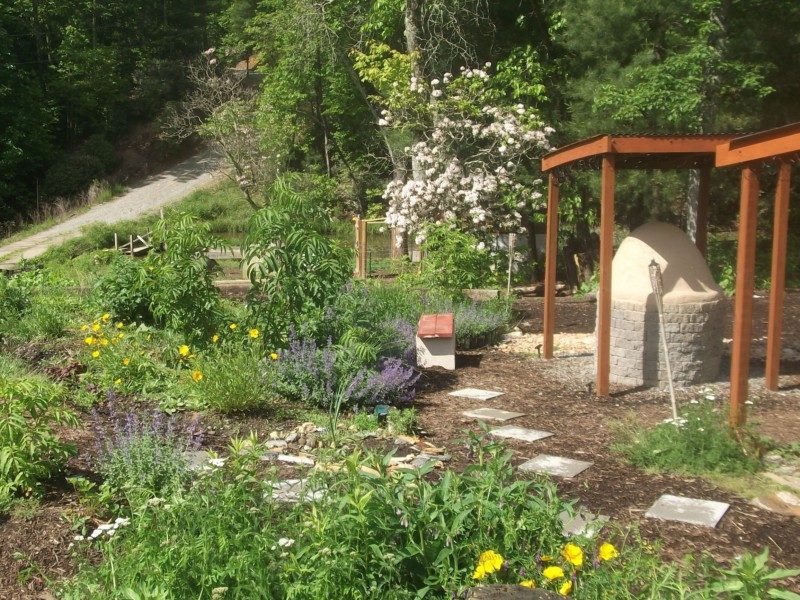
Once you have a good idea of what plants you have to choose from, the next step is to use the available shapes and colors to create a beautiful landscape plot.
Choose Your Location
You can start your edible landscape plot up against your house as with traditional home landscape design. You can use it to highlight your entryway. Or…
Go wild and plant plots around your yard, connected by paths, to create outdoor rooms and design vignettes. Make your plots into rows as you would a garden. Use them as a hedge around your house.
Edibles that are delicious to you may also be delicious to pests (deer, rabbits, etc.) or neighbors. Make sure you choose a location where you can adequately protect your plants from pests (or passerby’s).
As with any home project, local laws and homeowner associates rules may apply.
Choose Your Shape
Your edible landscape plot can be any shape you like. The most common are square, rectangular, round, or amoeba.
The shape will dictate your plant placement, quantities, and spacing. For example, an 8 x 8 square, will probably only get you a dwarf fruit tree, a small fruit bush, and maybe some low growing ground cover plants or herbs. Larger, extended areas can include multiple trees and shrubs.
Design with Color and Texture
Perennial edibles come in a variety of shapes and colors. As with non-edible plant design, take into account the appearance and structure of leaves, the flowering period and flower colors, and the shapes of your edibles. Create patterns with your plants that appeal to your design preferences.
Other Landscape Design Pointers
If you place a large tree in the center of your plot, you can plant sun-loving plants on the sunny side and shade-loving plants in the shaded path of your tree. Fruit trees tend to offer dappled rather than full-shade, so you have more options for your shade-side edibles.
Stair-step your plants for visual interest and sunlight management. Shorter plants that require full sun should be closest to the path of the sun, so they don’t get shaded out by taller plants.
Keep in mind appropriate plant spacing. Plan to plant for mature size. You can use annuals to fill in empty spaces until your perennial plants mature.
Step 3: Take Your Edible Plot Plan for a Taste Test
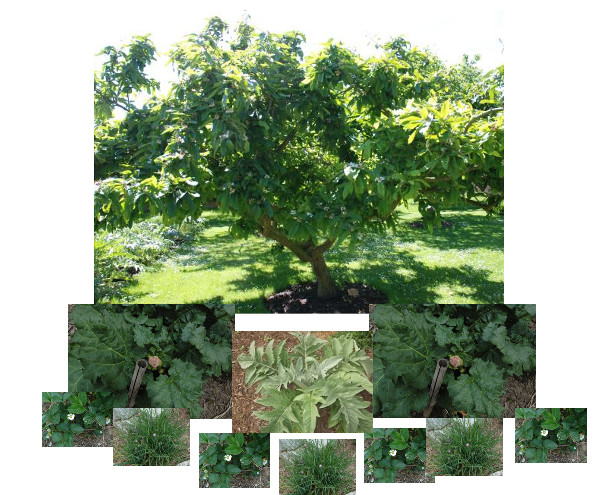
Medlar Tree Image from BluebellNursery
Since quality edible plants can be expensive and take a while to grow, making a mock-up of your edible plan can save you money and effort. Find images of mature plants and try to represent them to size on a sheet of paper so you have a good sense of what your mature plantings will look like.
In this example, I chose hard-to-kill options with different leaf structures and colors and alternated the patterns. The tree is a Medlar. I have it surrounded to the south with rhubarb and cardoon which are similarly-sized plants with edible stalks that can be continually harvested. In front of these large shrubs, I have lower growing strawberries and common chives.
Step 4: Prepare Your Soil and Plant
Now that you’ve got your design plan in place, you are ready to get planting. Similar to preparing a vegetable garden, you want to give your plants the best start possible.
Dig holes at least three times the width and depth of your plant and back-fill with plenty of good soil mix (if you don’t have good soil). Plant your trees no deeper than the level of the pot after you have amended your soil.
Amend your soil as necessary to make sure you have the nutrients and soil type your chosen plants prefer. Adding compost, lime, sulfur, minerals, etc. at the time of planting will help ensure your plants have what they need for best growth. A soil test is a good idea if you aren’t sure of your soil type and nutrient needs.
Mulch appropriately after planting. Oak leaves and pine needles are great for plants that require acidic soil (e.g., blueberries). Double-shred hardwood, grass clippings, and rotted hay are better for edibles that need a neutral or alkaline pH.
Install irrigation at the time of planting or make a plan for regular watering until plants are well-established.
Keep in mind new plants need extra TLC until they become acclimatized to their new homes and set down deep roots. Weed often to prevent competition for resources while plants are establishing.
Year after year, with a little maintenance, your edible plots will get bigger, stronger, and more beautiful and you will reap the benefits of a more diverse, sustainable food supply on your homestead.

